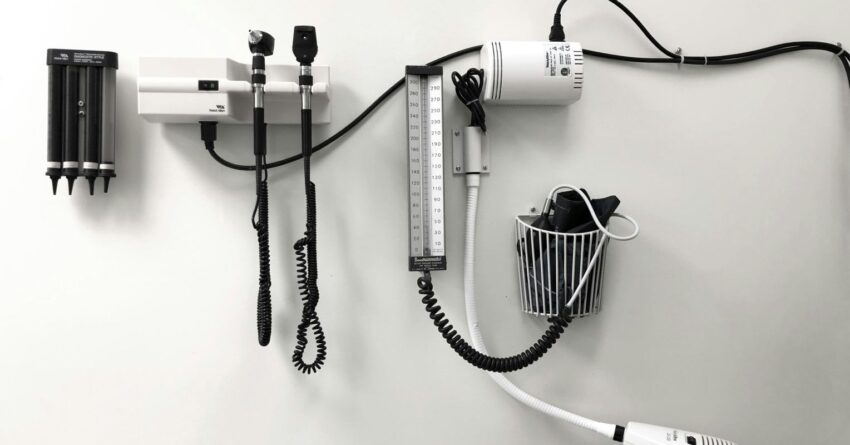For people who struggle with illness anxiety, making sense of their common responses is vital to better understanding how health-related fears can impact daily functioning. Once we understand these responses, learning what to do about them can foster healing from health-related anxiety. Following are four common responses to illness anxiety, why they are problematic, and what anxious patients can do to cope and respond in a more healthy and balanced way.
Care-Seeking
Illness-anxious people often resort to “care-seeking” behaviors in an effort to find reassurance. This most commonly manifests in multiple and frequent visits to doctor’s offices, emergency rooms, and urgent care facilities. These individuals will often seek specialists, gather referrals, visit numerous doctors for second and third opinions, and undergo unnecessary tests and scans to try to quell their anxiety.
The problem: Care-seeking behavior can place a strain on both the patient and the medical system. As patients seek multiple opinions, their financial obligations can mount, appointments can take significant time out of their day, and misalign their priorities. Further, seeking unneeded care can impact the medical system, as appointments made out of anxiety can crowd doctors’ schedules and limit other patients’ ability to be seen.
What to do: It is important for illness-anxious patients to create space between symptom or sensation and behavioral response. Once they recognize that not every physical discomfort requires immediate or emergency care, they can learn to respond from a more rational and less anxiety-driven place which can result in reduced care-seeking.
Care-Avoidance
We may view care avoidance as the polar opposite of care-seeking. In an avoidant response, the patient completely shuns medical treatment out of fear of finding out negative information related to their health status. Avoidance is a common response to anxiety: If we can ignore the stimulus, we can stay safe and insulate ourselves from the perceived threat.
The problem: These patients often forgo necessary medical treatment, such as yearly checkups, bloodwork, and health visits. This can have long-term implications, such as undiagnosed health problems and unmonitored chronic conditions. Avoidance can lead to requiring further care down the line.
What to do: Finding a healthy balance between seeking and avoiding is important for ensuring that an individual stays healthy but does not put off or delay medical care. Starting with something reasonable and achievable, such as scheduling a health checkup once a year, may create a manageable expectation for an anxious person that does not create or worsen feelings of dread or worry.
Hypervigilance
In simple terms, hypervigilance means “over-checking.” Illness-anxious people often develop a tendency to check and re-check their bodies for possible signs of illness or for changes that might indicate illness or disease. For example, a person who notices a skin rash might obsessively monitor the irritation, checking it over and over again to ensure that it has not worsened or spread. They may also engage in unhelpful online research of their symptoms, which can also cause anxiety to escalate.
The problem: Hypervigilance can rob individuals of attention to other important areas of their lives. Time spent checking and re-checking can distract from other priorities and obligations, such as work and family. Ironically, while hypervigilance may be considered a “safety behavior,” it actually can cause a person to feel less safe as they focus undue attention on a single symptom or sensation.
What to do: Hypervigilant patients can benefit from adopting mindfulness practices as a way to combat persistent rumination and attention to symptoms. With other things to pay attention to, intense but unhelpful fixation on symptoms can lessen. As attention turns to other areas, patients gradually let go of their rigid focus on a particular part of the body.
Panic
Many illness-anxious patients experience panic attacks. There is a very simple reason for this: The body responds to emotions of fear and anxiety by overproducing the naturally-occurring stress hormone cortisol. When too much cortisol is released, people experience symptoms such as accelerated heart rate, lightheadedness, respiratory distress, and gastrointestinal discomfort.
The problem: These panic responses can exacerbate illness anxiety, as they mirror more serious or dire medical problems. While a panic attack may mimic a heart attack, it is in no way similarly physically dangerous. But because panic symptoms can so easily be confused with serious medical symptoms, people experiencing them often respond as though it were a true medical emergency.
What to do: Understanding how panic works and what it feels like is helpful in learning to differentiate between symptoms of anxiety and symptoms that signal a true medical condition or emergency. Patients who recognize how panic manifests for them uniquely have an easier time recognizing when they are experiencing panic symptoms versus medical emergency symptoms.
